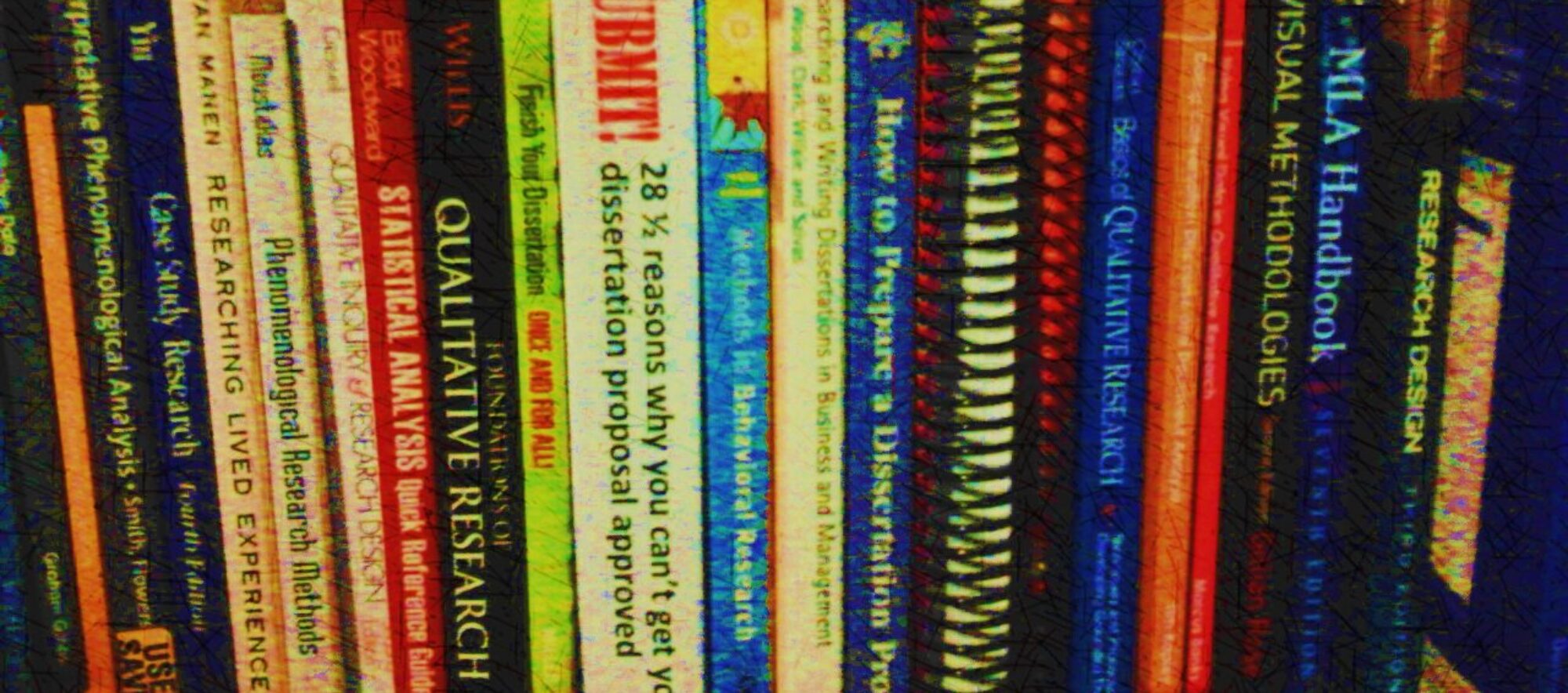For the past thirty days, I have been writing a long project. My goal was 50,000 words. I’m happy to say, I exceeded my word count goal within the allotted time. While I was writing, I hit multiple walls, contemplated giving up several times, and eventually came to understand that this was a job—a 30-day temp job.
Writing at this intense pace reminded me of writing my dissertation. I don’t have any magic medicine to offer you to help you accomplish your gargantuan dissertation task. However, I can offer you some insights from my writing process. In this post, I break down the thirty days into four phases.
Phase I: Denial: Surfing the pink cloud
When I started writing on Day 1 of my 30-day writing project, I was overflowing with enthusiasm. I had a good idea (it came to me in a dream). My outline made sense. My ducks were in a row, my planets were aligned, my support team members (friends and family) were shaking their pompoms. . . . What could possibly go wrong?
Nothing! I was eager to get started, and away I went. I dove in with conviction that this project was going to be great. Not just good, but great. After all, I’d had a dream about it! You can’t go wrong when you dream about your topic, right?
For the first two weeks, I wrote like a fiend, like a maniac, like a writing machine. I hardly took time to eat or sleep. I was on fire with the zeal of the writer who has grabbed a great idea by the tail and wants to cage it before it slinks back into the wild—or wherever it is ideas come from.
When I embarked on my dissertation, I had some similar pink-cloud moments. I thought I had a great idea. I studied all the articles in my field, I read all the books. I had a vision. My support team was in place, my direction seemed clear. I figured I would be done and defending in no time. Piece of cake.
Phase II: Horror: Bashing into the wall
Somewhere around Day 15 of my 30-day writing project, I hit the first wall. I’d just read what I’d written. I had the sinking realization that the structure of the project was flawed. My outline had steered me wrong! I started frantically rearranging sections according to a new outline. My daily average word count dropped like a rock. I saw my word count goal slipping away.
After crashing into the first wall and surviving (somewhat bruised), I clawed my way back on track, recouping my average daily word count. The next wall loomed in front of me a few days later. After reading what I’d written to that point, I realized, the structure was still wrong! Oh, the horror. At that moment, I felt like abandoning the project. I couldn’t see my way through. What had seemed like such a clear path from beginning to end had led me off the cliff into some snarled undergrowth. I was tangled in confusion and indecision. Which way to go? I couldn’t climb out of the ditch.
When I was working on my dissertation, I hit my first major wall when I was writing my dissertation proposal. I had a new chair; she was less enthused about my approach compared to my previous chair. I wrote draft after draft and couldn’t seem to get it right. Nothing made sense anymore. This was my long dark night of the soul. I could have quit, but I am not a quitter. I put my head down and kept trudging forward, which means I kept reading, writing, thinking, and writing some more.
Phase III: Acceptance: Realizing the impossibility of the task
Around Day 20 in my 30-day writing project, I was back on track with an outline I hoped would work, feeling extremely battered and not at all cocky. I didn’t know if I would be able to achieve my word count goal. It felt impossible. It probably was impossible. Yet I was not willing to give up. I could still see the bones of my project underneath my fumbling cloudy writing. I could still hear it begging to be born. I kept writing.
At that point, I took the leap of faith. I didn’t know what would happen or how it would happen if I finished my project; I just knew I had to keep going—even if I couldn’t fly, even if I crashed at the foot of the cliff (metaphorically speaking). I wanted my pink cloud back but I was older, wiser, and humbler now about my chances for success.
When I was working on my dissertation, I crossed a similar threshold of acceptance. I thought there was a real possibility I would run out of time in my program. If I ran out time, I risked being dismissed from the Ph.D. program. Everything I had worked toward would have been lost. I’d invested years in this impossible journey. I closed my ears to my fears, hunkered down, and kept writing.
Phase IV: Commitment: Showing up for the work
Finally, I came to understand that I had committed myself to a 30-day temp job. Even though I was my own employer on this project, so to speak, I was required to suit up and show up, get the work done for the day with a minimum of drama, and come back the next day to repeat the task. At that point, the glamor had evaporated. The bubbly enthusiasm of the pink cloud was gone, but so were the fears: that my idea was dumb, that my project would never work, that I wasn’t good enough to succeed.
The fears were replaced with a deep sense of satisfaction with the process itself. Regardless of the outcome, I was having a blast puzzling out the best structure for my project. I was a detective following the clues. I could have fired myself from the temp job at any time, and once or twice, I almost did. But had I quit, I would have missed the gift of working like “a digger on the railroad,” as Ralph Waldo Emerson said, to bring my project into being.
There was a point in my dissertation writing that I knew I was going to make it. My idea was solid, my approach was logical, my data were robust, my analysis was thorough, and my write-up was valid. From that moment, it was as if I had crossed the field of poppies and I was running along the yellow brick road toward the Emerald City.
The approvals unfolded quickly. The defense happened. The pdf of the final manuscript was submitted to ProQuest. Some months later, my diploma arrived in the mail. I have it around here somewhere, I think. It’s a symbol, it’s evidence that I successfully navigated the long doctoral journey. I gained so much more than a diploma. I learned how to be a writer—from writing my dissertation.
What I learned
Other dissertators have different experiences. Some move along briskly, others not so much. I was a nontraditional dissertator at an online university. I received little support from my mentors and peers. I fell in multiple ditches, bashed into many walls, clawed my way out of brambles . . . it was not easy.
Nor should it be easy.
We build character by setting goals, making commitments, and showing up to fulfill them. We can change our minds, and sometimes we should. There’s no shame in pivoting away from a project that won’t help make the world better in some way. But sometimes the way to success is to roll up our sleeves, pick up that shovel (metaphorically speaking), and get busy digging that railroad.
Today I can say I dug my own personal railroad: Eighty-thousand words in thirty days.



